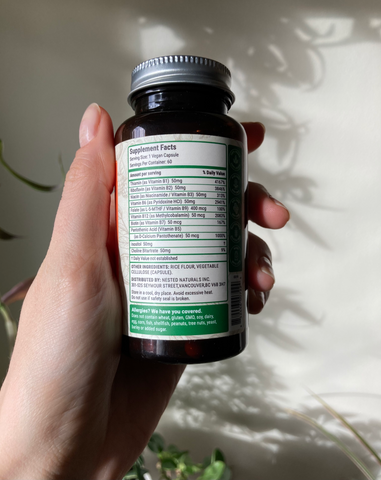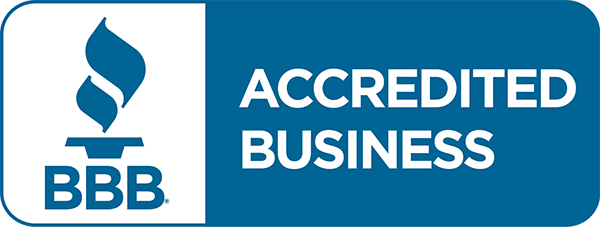How To Read a Supplement Label

If you’re like 68% of adult Americans, you’re probably taking one or more dietary supplements every day.
But how often do you look at the supplement facts label on the side of the packaging? Not often, I’ll bet.
According to a study by the University of Minnesota, people tend to say they look at what dietary supplement labels include a lot more than they actually do – which is hardly surprising. With the sheer amount of unfamiliar information found on supplement labels, it can definitely be a confusing task to fully read and understand them – and consequently, equally difficult to make healthy, informed decisions regarding the products we buy and consume.
Why It’s Important To Read Supplement Labels

Supplement labels can be confusing, so you’ll need to learn how to decode them in order to make sure you’re getting exactly what you’re looking for, and can make quick, informed choices that contribute to a healthy diet.
Just as you wouldn’t buy a new article of clothing without checking the size and materials, you shouldn’t purchase or take supplements without first reading the label. Understanding what’s in the supplements you take can help you make healthier choices, and is a good step towards improving your overall diet.
Know the Ingredients
It’s always a good idea to know exactly what’s inside the supplements you consume, and what nutrients they provide. By checking the ingredients listed, you’ll also know if you should avoid taking a particular supplement due to allergies, a food intolerance, or a diet that excludes certain components (like gluten or dairy).
Check Key Information
To ensure you maximize the health benefits received from your supplements, you’ll want to check essential information and details such as serving size, vitamin content, %DV and directions for storage/use.
How To Read A Supplement Label
Supplement labels can be confusing, so you’ll need to learn how to decode them in order to make sure you’re getting exactly what you’re looking for, and can make quick, informed choices that contribute to a healthy diet.
Here’s a handy guide to help you understand all of the different parts of a supplement label:
-
Serving Size
This is the manufacturer’s suggested serving that is expressed in the appropriate unit (eg., capsule, tablet, packet, teaspoonful). Serving sizes vary from supplement to supplement, and it’s best not to veer from the recommended dosage unless told to do so by a doctor or health practitioner.
-
Amount Per Serving

To ensure you maximize the health benefits received from your supplements, you’ll want to check essential information and details such as serving size, vitamin content, %DV and directions for storage/use.
This heads the listing of nutrients contained in the supplement, followed by the quantity of each nutrient that’s available in each serving.
-
Percent Daily Value (%DV or PDV)
This tells what percentage of the recommended daily intake for each nutrient for adults and children (ages 4 and up) is provided by the supplement. If an ingredient is missing a %DV or you find asterisks (**) where the value should be, it means that a daily value has not been established for that nutrient.
-
Units (Milligrams, Micrograms and IU)
Milligrams (mg) and micrograms (mcg) are units of measurement that apply to water-soluble vitamins (like C and B complex) and minerals. A milligram is equal to .001 grams; a microgram is equal to .001 milligrams. International Units (IU) is a standard unit of measure for fat-soluble vitamins (A, D and E).
-
Other Ingredients
This is usually where you can find the list of ingredients which are not key to a supplement’s nutritional benefits – such as the ingredients to make gel capsules, fillers, binders, etc. This section will also contain information about potential allergens, and other nutritional warnings. (*Note: Not all supplements will list all of their ingredients on the label. If you’re concerned, always make sure to do your own research and find out more.)
Understanding Your % Daily Value (%DV)
In a nutshell, the % Daily Value is a guide to the nutrients in one serving of food/supplements and are based on the Dietary Reference Intake guidelines established by the Institute of Medicine of the U.S. National Academy of Sciences.
The % Daily Value listed on supplement labels will tell you what percentage of the recommended daily intake for each nutrient is provided in each serving, based on a 2000 calorie diet. For example, if a nutrient lists 75% as its %DV, it means that one serving will provide you with 75% of the FDA’s recommended daily intake for that particular nutrient.

In general, 5%DV or less is considered low in that nutrient, while 20%DV or more is high.
Note: Depending on your health status, age, and activity level, your ideal diet may vary from this amount. Despite this, the % Daily Value can still be used as a frame of reference whether or not you consume more or less than 2000 calories in a day, as it can help you determine if one serving of a particular supplement is high or low in certain nutrients.
Quick Guide to %DV
In general, 5%DV or less is considered low in that nutrient, while 20%DV or more is high.
If you want to limit your intake of a particular nutrient, make sure the %DV listed is 5% or lower. Conversely, for those nutrients you want to consume in greater amounts, make sure the %DV is 20% or higher for those nutrients.
By looking at the %DV, it’ll be easier for you to make comparisons and decide which supplement would best suit your needs/lifestyle. (Just make sure that the serving sizes are similar for the products you’re comparing.)
What about nutrients without a %DV?
The good news is, just because some nutrients may not have a listed %DV, doesn’t mean that they are bad or unnecessary for a healthy diet. It simply means that the U.S. FDA has not made an official recommendation for how much of these nutrients you should have in your diet.

Still have questions? Give the team at Nested Naturals a call any time and we’ll be happy to help you understand the numbers on our labels.
TIP: If you would like to limit your intake of nutrients that have no %DV, compare the labels of similar products and choose the one with the lowest amount of that nutrient.
If you’d like to learn more about understanding and using the nutrition facts label for food/supplement products, you can also check out the FDA’s guide here.



